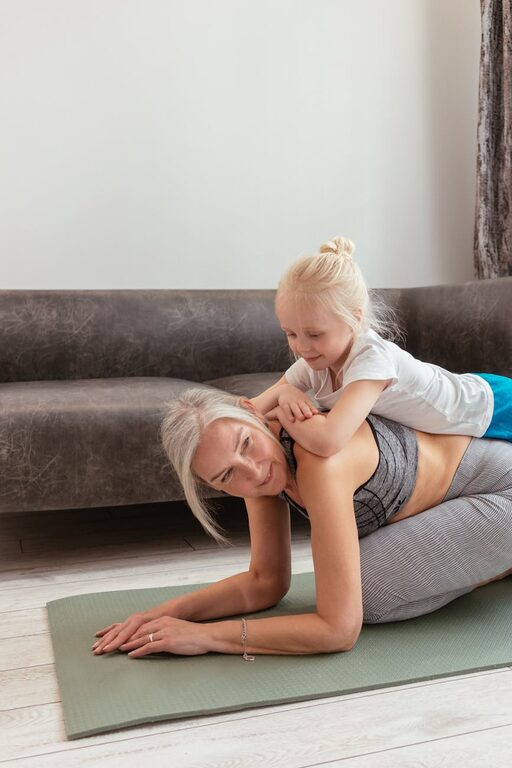
Stretching is a simple yet powerful way to enhance your physical health and well-being. Whether you’re new to exercise or looking for a gentle way to stay active, stretching at home can help improve flexibility, reduce muscle tension, and even boost your mood. This beginner’s guide will walk you through the basics of stretching, including techniques, tips, and easy routines you can start today.
Why Stretch at Home?
Many people associate stretching with warm-ups before intense exercise, but it’s also beneficial as a standalone activity. Stretching regularly can:
– Increase your range of motion
– Improve posture
– Relieve muscle tightness and stiffness
– Enhance blood circulation
– Reduce the risk of injury during daily activities
Doing these exercises at home means you can set your own pace, choose your favorite time of day, and create a comfortable environment without the need for special equipment.
Understanding the Basics of Stretching
Before you begin stretching, it’s important to know the two main types of stretches:
Static Stretching
This is the most common type used by beginners. It involves slowly stretching a muscle to the point of mild tension and holding it for about 15 to 30 seconds. Static stretching helps to increase flexibility and is ideal after workouts or for relaxing tight muscles.
Dynamic Stretching
Dynamic stretches involve movement, such as swinging your arms or legs in a controlled way. These are great for warming up your muscles before exercise and help improve blood flow.
Safety Tips for Beginners
Stretching is generally safe, but keep these tips in mind to avoid injury:
– Warm up first: Stretching cold muscles can cause strains. Do light walking or marching in place for 3–5 minutes before stretching.
– Don’t bounce: Avoid jerky or bouncing motions during stretches to prevent muscle tears.
– Listen to your body: Stretch to the point of gentle tension, not pain. If something hurts, ease off.
– Breathe deeply: Focus on slow, deep breaths to help muscles relax.
– Be consistent: Stretching regularly is key to seeing improvements.
Essential Stretches for Beginners
Here are some easy stretches to get you started. Perform each one 1–3 times, holding for 15–30 seconds.
1. Neck Stretch
– Sit or stand tall.
– Slowly tilt your head to one side, bringing your ear toward your shoulder.
– Keep your shoulders relaxed.
– Repeat on the other side.
2. Shoulder Rolls
– Stand or sit with your back straight.
– Roll your shoulders forward in a circular motion 5 times.
– Reverse the direction and roll backwards 5 times.
3. Chest Opener
– Clasp your hands behind your back.
– Straighten your arms and gently squeeze your shoulder blades together.
– Lift your chest and breathe deeply.
4. Seated Forward Bend
– Sit on the floor with legs extended straight.
– Slowly reach for your toes, keeping your back straight.
– Only go as far as comfortable without pain.
5. Cat-Cow Stretch (for spine flexibility)
– Start on hands and knees.
– Arch your back upward like a cat, tucking your chin.
– Then lower your belly and lift your head and tailbone into the cow position.
– Repeat slowly 5 times.
6. Hip Flexor Stretch
– Kneel on one knee with the other foot flat on the floor in front.
– Shift your weight forward gently, feeling a stretch through the front of the hip.
– Keep your back straight.
– Switch sides.
7. Standing Quadriceps Stretch
– Stand tall and hold onto a chair or wall for balance if needed.
– Bend one knee and bring your heel toward your buttocks.
– Hold your ankle gently and keep knees close together.
– Switch legs.
Creating Your Stretching Routine
To build a habit, try spending 10–15 minutes stretching daily or at least 3-4 times per week. Here’s a sample routine for beginners:
- Warm-up: Light marching in place – 3 minutes
- Neck Stretch – hold 20 seconds each side
- Shoulder Rolls – 5 forward and 5 backward
- Chest Opener – hold 20 seconds
- Seated Forward Bend – hold 30 seconds
- Cat-Cow Stretch – 5 slow repetitions
- Hip Flexor Stretch – hold 20 seconds each side
- Standing Quadriceps Stretch – hold 20 seconds each side
Feel free to adjust the timings and repeats based on your comfort and schedule.
Tips for Staying Motivated
– Stretch at the same time each day to build a routine.
– Play calming music or use guided stretching videos.
– Invite a friend or family member to join you for company.
– Celebrate small progress in flexibility and comfort.
When to Consult a Professional
If you have existing injuries, chronic pain, or specific health concerns, check with a healthcare provider or physical therapist before starting a stretching program. They can recommend safe stretches tailored to your needs.
—
Stretching at home is a fantastic way to nurture your body and mind. With simple movements and a little time each day, you’ll improve your flexibility, reduce stiffness, and feel lighter and more energized. Give these beginner-friendly stretches a try and enjoy the many benefits of keeping your muscles happy and healthy!
